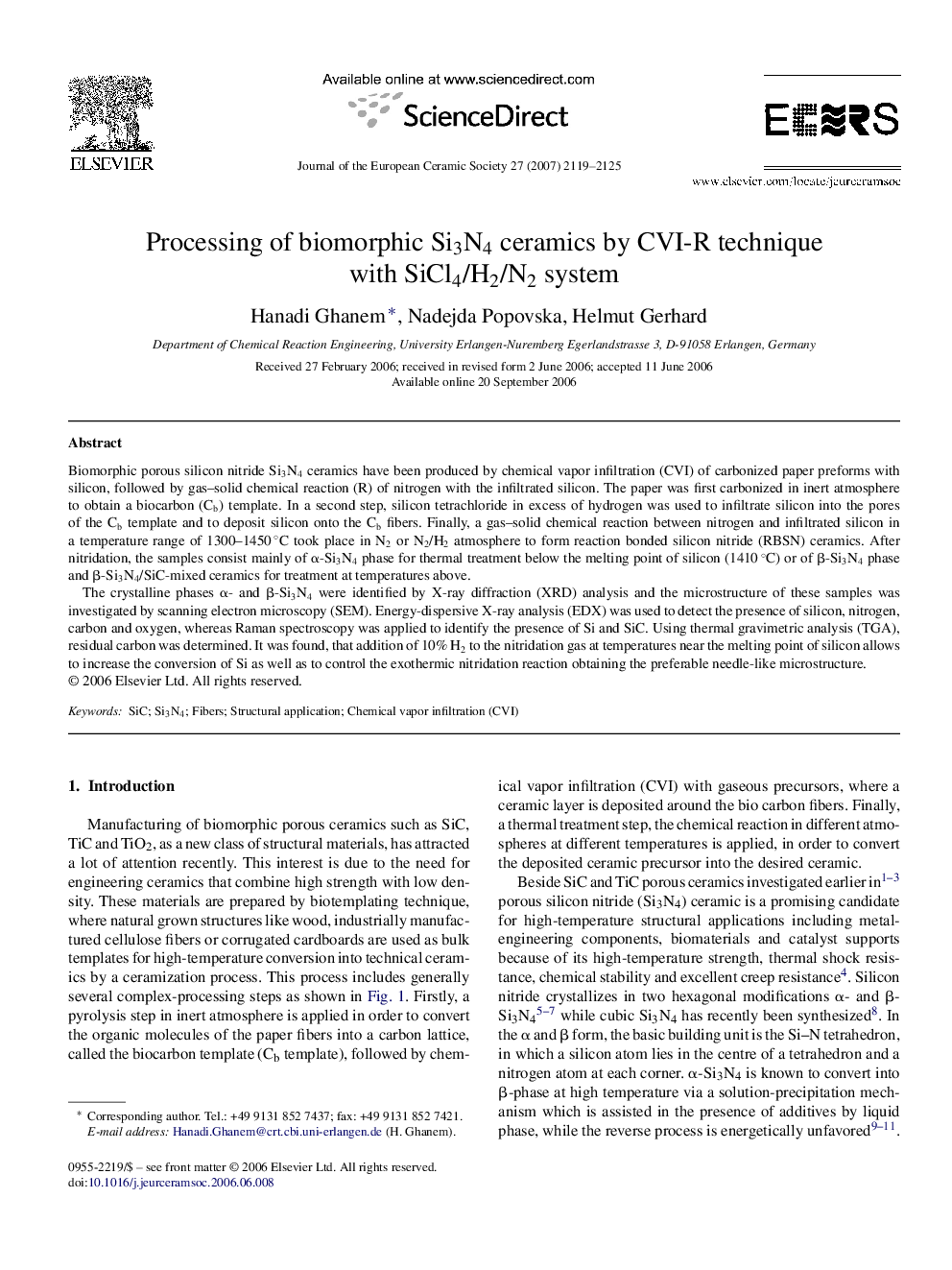| Article ID | Journal | Published Year | Pages | File Type |
|---|---|---|---|---|
| 1477722 | Journal of the European Ceramic Society | 2007 | 7 Pages |
Biomorphic porous silicon nitride Si3N4 ceramics have been produced by chemical vapor infiltration (CVI) of carbonized paper preforms with silicon, followed by gas–solid chemical reaction (R) of nitrogen with the infiltrated silicon. The paper was first carbonized in inert atmosphere to obtain a biocarbon (Cb) template. In a second step, silicon tetrachloride in excess of hydrogen was used to infiltrate silicon into the pores of the Cb template and to deposit silicon onto the Cb fibers. Finally, a gas–solid chemical reaction between nitrogen and infiltrated silicon in a temperature range of 1300–1450 °C took place in N2 or N2/H2 atmosphere to form reaction bonded silicon nitride (RBSN) ceramics. After nitridation, the samples consist mainly of α-Si3N4 phase for thermal treatment below the melting point of silicon (1410 °C) or of β-Si3N4 phase and β-Si3N4/SiC-mixed ceramics for treatment at temperatures above.The crystalline phases α- and β-Si3N4 were identified by X-ray diffraction (XRD) analysis and the microstructure of these samples was investigated by scanning electron microscopy (SEM). Energy-dispersive X-ray analysis (EDX) was used to detect the presence of silicon, nitrogen, carbon and oxygen, whereas Raman spectroscopy was applied to identify the presence of Si and SiC. Using thermal gravimetric analysis (TGA), residual carbon was determined. It was found, that addition of 10% H2 to the nitridation gas at temperatures near the melting point of silicon allows to increase the conversion of Si as well as to control the exothermic nitridation reaction obtaining the preferable needle-like microstructure.
